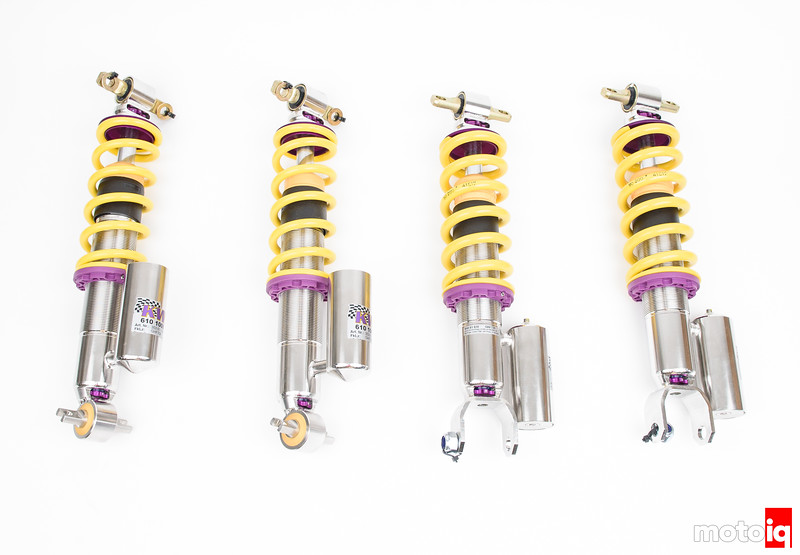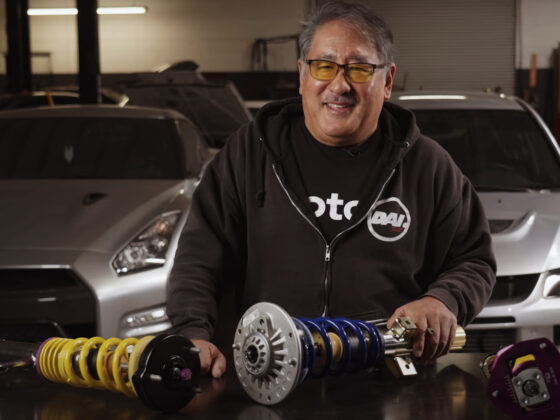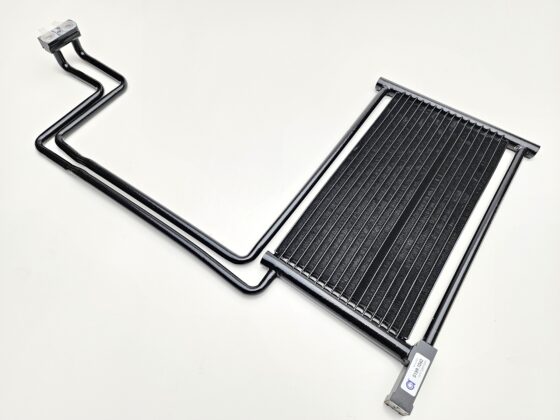
Maybe this table will be a good guide to your adventures in adjustment.
More Front Compression
Sharper turn-in.
Reduces body roll.
More response to initial steering input.
Feels good and responsive in transitions.
Feels good for most drivers but, this can fool them into adding too much.
Most things happen at the initial corner entrance.
The front of the car takes large bumps well without bottoming.
Too much front compression
Severe Tire shock no grip, the car wants to slide.
Very harsh uncomfortable ride.
The front suspension is stiff and non-compliant. The front of the car bobs hops and jiggles around.
The front of the car skips under cornering and braking and has no traction.
The front of the car may go into early grinding understeer right at turn-in.
The front of the car has poor traction in bumpy turns.
Poor second 1/8 mile stability in drag racing.

Too Little Front Compression
The front of the car feels sluggish and unresponsive. Does not feel floaty and scary like too little rebound does but the car will respond sluggishly to steering input.
Moderate to large bumps will cause the suspension to bottom out, sometimes harshly where the car feels like it’s blowing through its suspension travel and the suspension isn’t softening the blow.
Hitting FIA curbs will bottom the suspension and upset the car.
The car will have excessive nosedive under braking, it generally won’t feel scary, just sloppy.
The car may have premature rear wheel lock-up and instability under hard braking.
The front of the car may bounce or even bottom out after launch affecting rear traction and stability in drag racing.





4 comments
Thank you for this and your previous article on adjusting shocks. Very helpful.
“But what about damping coefficient!” I’m waiting for some FSAE-traumatized person to chip in. 😉
No, good guide; a few nuances on a lot of these directions that I’d sort of thought about but not nearly as concretely as you laid it out, thank you for all this.
I hardly ever calculate that. Not even for developing a new application. It’s because 99% of the time I only have partial data to do so and I have to fill in some blanks by guessing. I think with experience it’s only minimally useful.
Honestly, makes sense. I feel like there’s far more value in being able to go “OK, the car is misbehaving in this way, what do I do to fix that?” and having a plan for what to do before the next session than in trying to refine some way to have a good guess with zero test data.
I have some spreadsheets where I took a platform I can fill in about all the numbers on (ie: Miata) and kind of back calculated some shock dyno data for setups that work through them to see if I could figure out why, and what their guys were thinking of to get there… but that’s more just an experiment rather than an attempt to have a practical thing.